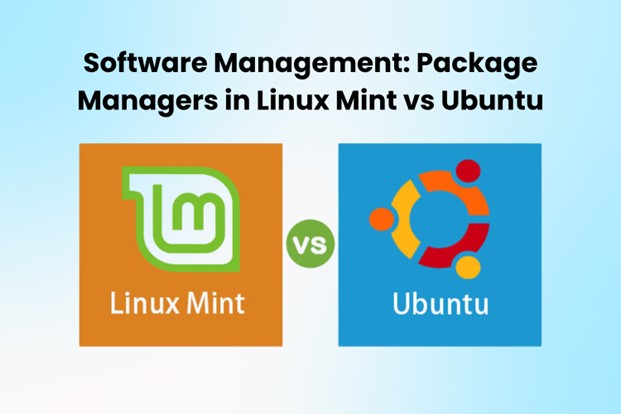Greetings from the Linux world, where managing software is both an art and a science. Understanding the subtleties of package management is essential for Linux Certifications. In this blog, we examine the different package management strategies used by Linux Mint and Ubuntu, two well-known Linux distributions. We will compare Linux Mint vs Ubuntu, illuminating how each distribution manages the installation and updates of applications.
Table of Contents
- Linux Certifications
- A Tale of Two Package Managers
- Linux Mint’s Synaptic Harmony
- Ubuntu’s APT Allegro
- Linux Mint vs Ubuntu
- Linux Mint
- Ubuntu
- Choosing the Right Dance Partner
- Key Considerations: Updates and Dependencies
- Navigating the Certification Waters
- Conclusion
Linux Certifications
Comprehending the subtleties of package administration becomes essential for anybody aiming for Linux certifications. Being proficient with these package managers is a crucial step towards success in Linux certification, whether navigating the Synaptic seas of Linux Mint or mastering the APT commands in Ubuntu.
A Tale of Two Package Managers
As we explore the core of Ubuntu and Linux Mint, our attention becomes more focused on the package manager, which is the foundation of software management. Here, the complex dance between apt and apt-get is shown, highlighting the different approaches taken by these two titans of Linux.
Linux Mint’s Synaptic Harmony
The Synaptic Package Manager is the focal point of Linux Mint’s tranquil environment. With its intuitive interface, Synaptic takes on the role of the conductor, expertly coordinating the installation and removal of packages. This is where Linux Mint’s dedication to ease of use and simplicity shows, which makes it an excellent option for newcomers to the Linux world.
Ubuntu’s APT Allegro
On the other hand, Ubuntu is known for its Advanced Package Tool (APT) and flexible apt-get command. Ubuntu’s dedication to reliability and effectiveness is shown via the APT system, which provides sophisticated package management capabilities. Ubuntu’s reputation is enhanced by its skilful use of APT commands, particularly among Linux users looking for a stable and potent distribution.
Linux Mint vs Ubuntu
Let’s examine how each distribution manages software packages, updates, and dependencies—the cornerstones of a reliable and secure Linux environment—in this battle of the giants of Linux.
Linux Mint
Known for its approachable design, Linux Mint uses the graphical APT front-end Synaptic Package Manager. The user-friendly interface of Synaptic makes it simple for users to search, install, and uninstall applications. Combining a sizeable pre-packaged software library with an emphasis on usability, Linux Mint promotes simplicity. Synaptic’s point-and-click simplicity comforts novice users, equating program administration to a leisurely walk through a well-kept garden.
Ubuntu
Ubuntu, originating in Debian, uses the apt-get command and the Advanced Package Tool (APT) to manage software. The efficiency and versatility of APT are evident when users use commands to add, update, or delete packages. The APT system offers system administrators and power users a strong foundation, reflecting Ubuntu’s dedication to long-term maintenance and reliability. Beginners may find the command-line interface intimidating, but it provides unmatched control over the software ecosystem.
Choosing the Right Dance Partner
The decision between Synaptic and APT in the Linux Mint vs. Ubuntu debate ultimately comes down to personal taste and the required amount of control. Are you new to Linux and looking for a gentle introduction? With its Synaptic simplicity, Linux Mint might be your ideal partner. Ubuntu’s APT commands provide infinite options for anyone yearning for more authority and productivity.
Key Considerations: Updates and Dependencies
System stability is highly valued by both Linux Mint and Ubuntu, ensuring that updates are extensively tested before being made available to users. Package managers take great care to handle dependencies, which prevents poorly managed software updates from having a cascading impact. Both distributions prove their mettle in this regard and add to the general strength of the Linux community.
Navigating the Certification Waters
Starting the Linux certification process may be like sailing a ship without a map. But worry not—Ubuntu and Linux Mint provide vital assistance for people wanting to get accredited. The dependability and adaptability of these distributions provide a supportive environment for Linux certifications, from CompTIA Linux+ to more advanced choices. Aspiring Linux workers may confidently traverse these certification seas and sail towards a happy and gratifying career in open-source knowledge, provided they understand package management well.
Conclusion
Upon concluding our examination of package managers in Linux Mint vs Ubuntu, it is evident that every distribution contributes a distinct style to software administration. The flexibility to pick makes Linux so beautiful, regardless of whether you like the APT Ballet or the Synaptic Symphony.
Learning the nuances of package management has become a must for everyone starting the Linux certification road. Therefore, the world of Linux greets you with open arms and many alternatives, whether you find comfort in the verdant pastures of Linux Mint or dance to the beat of Ubuntu. Make an informed choice about your distribution, and may you have happiness and fulfilment while learning the art of package management on your Linux journey.

